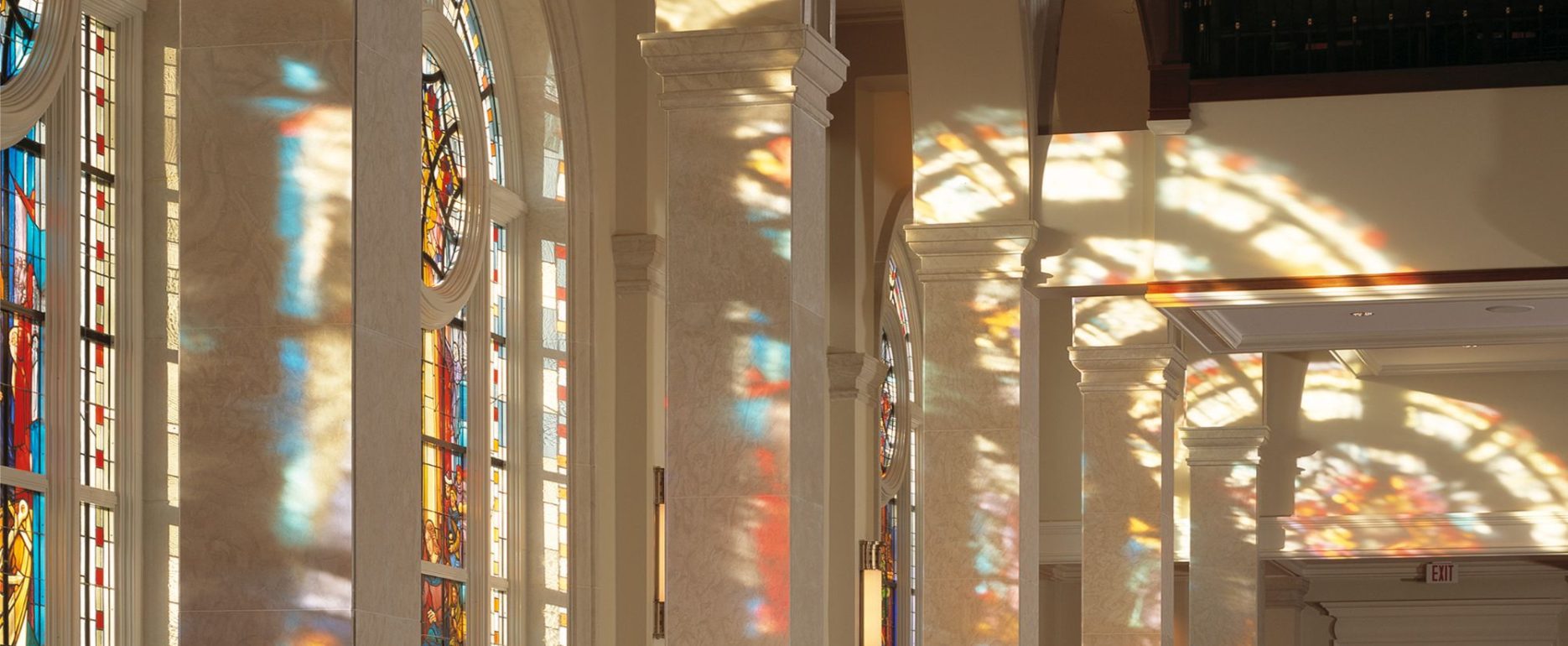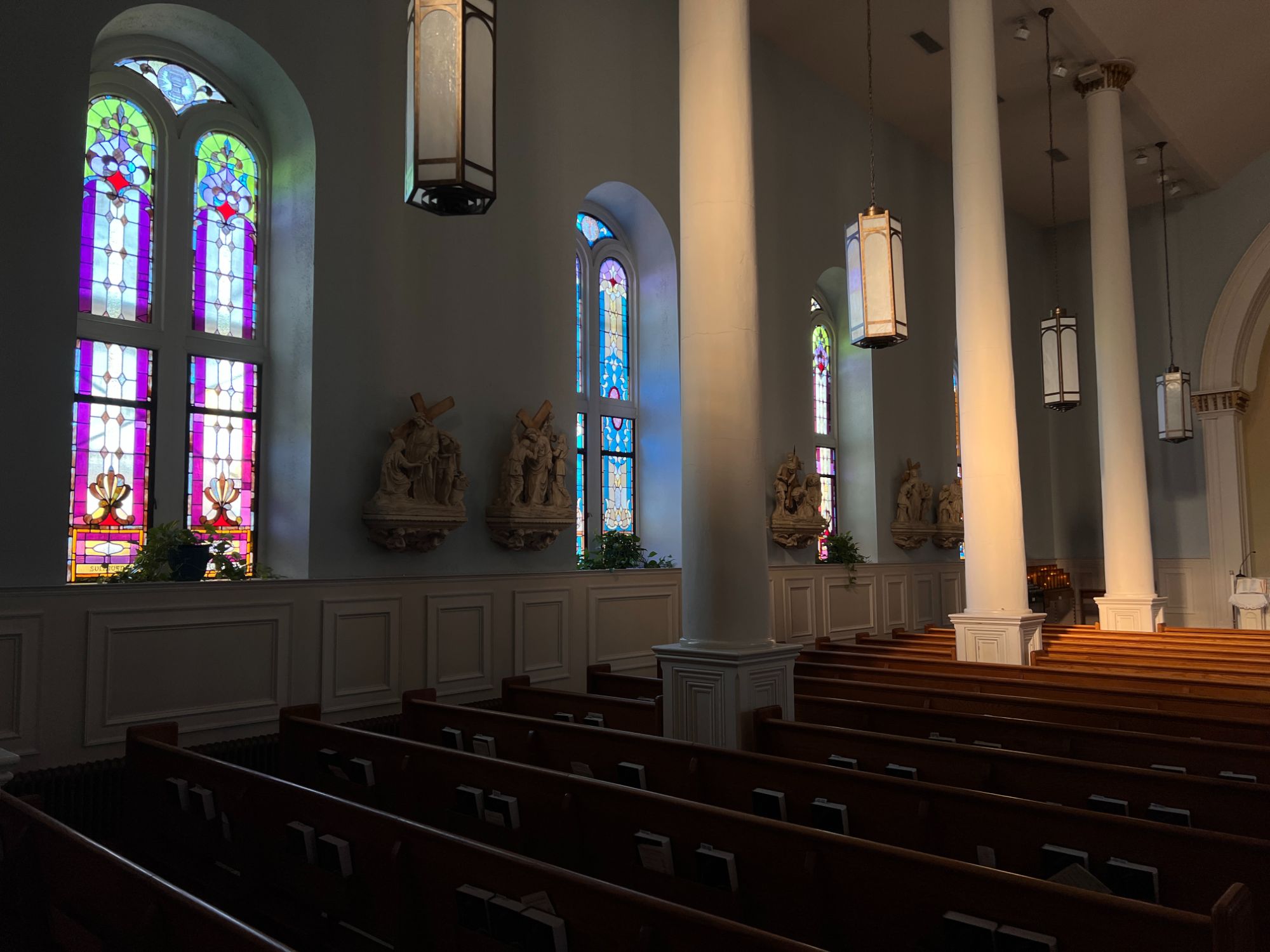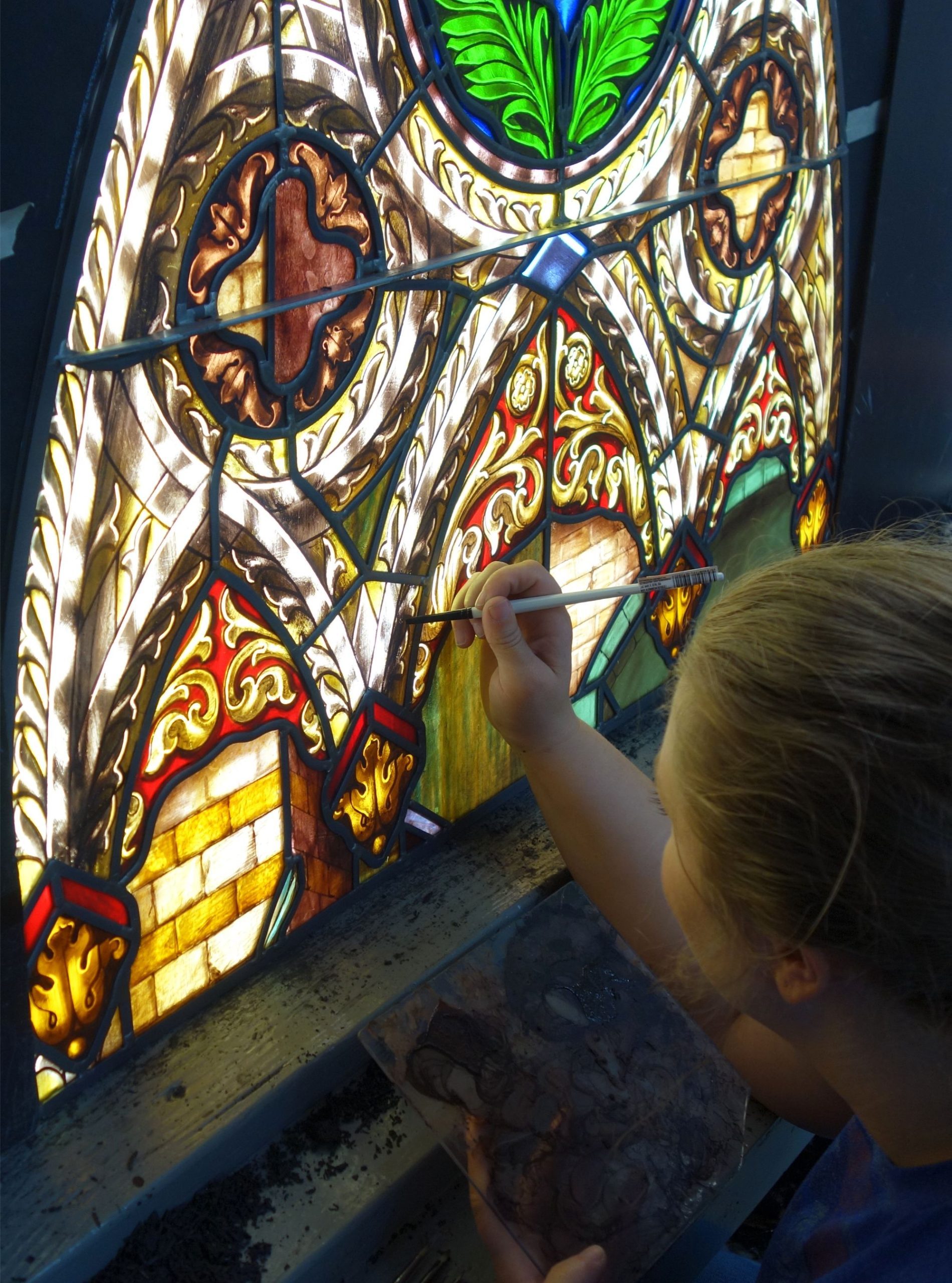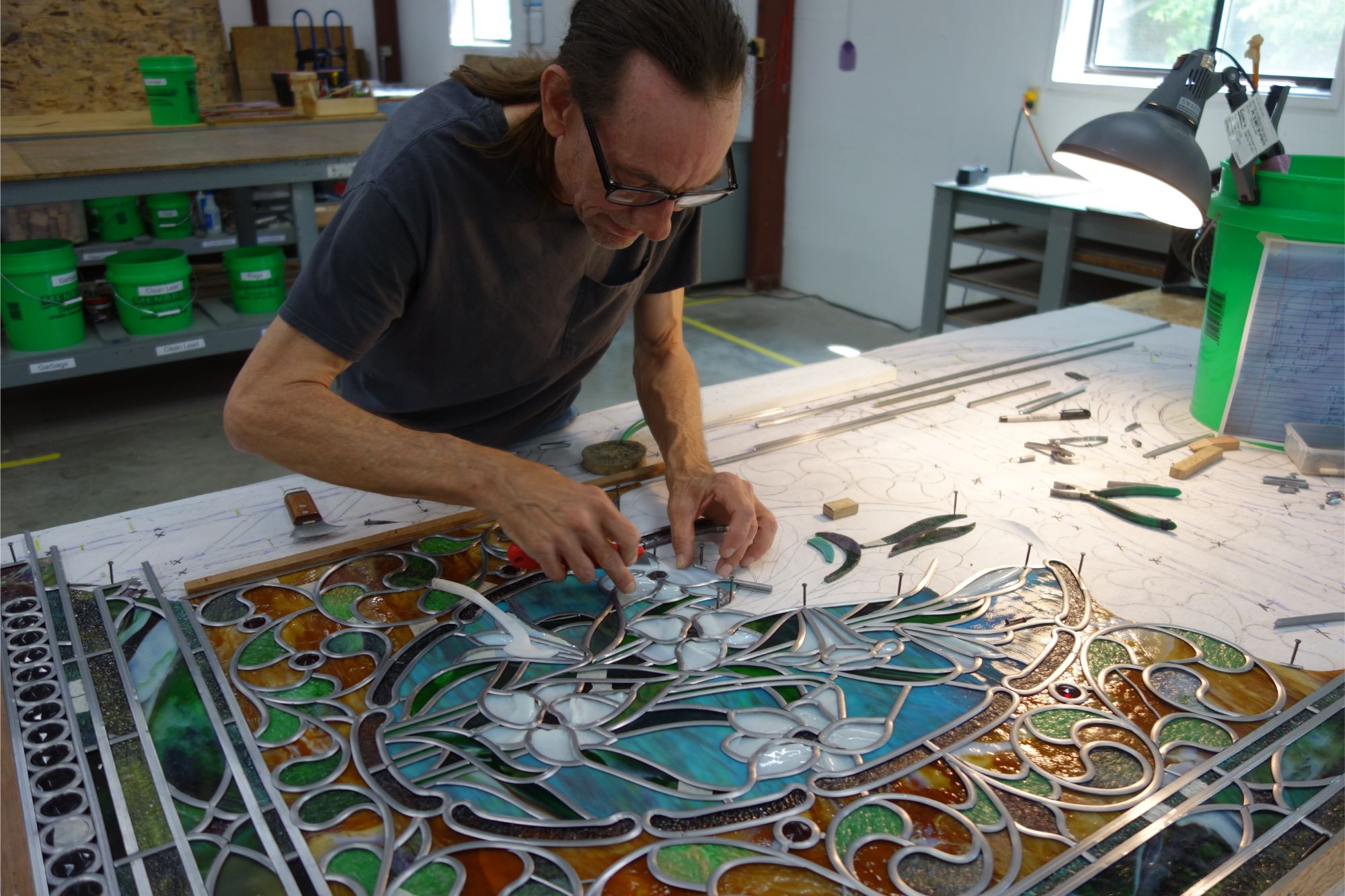
Walking into an old church bathed in multicolored light streaming through stained glass windows is a humbling experience. For centuries, stained glass windows have been much more than decorations. They are profound works of art that carry deep spiritual meaning, tell revered stories, and draw worshippers closer to their faith. These windows have transcended time, becoming more than architectural features – they are enduring symbols of belief and devotion.
Every handcrafted stained glass window has a story to tell. From their historical beginnings to the techniques that keep them alive today, these masterpieces stand as testaments to both human creativity and the resilience of faith. But what makes these windows so impactful? How do they serve as vessels of spiritual legacy, and who ensures their preservation for generations to come?
The Origins of Church Stained Glass

Church stained glass windows trace their roots back to medieval Europe, where they were first used prominently in the 12th century during the Gothic architectural boom. Cathedrals such as Our Lady of Chartres in France became renowned for their vibrant stained glass windows, which told biblical stories for congregations that were largely illiterate at the time.
During the Middle Ages, access to written scripture was limited, but the need to teach the stories of the Bible was paramount. Stained glass windows – often described as “the poor man’s Bible” – served this purpose exceptionally well. The brilliant depictions of saints, apostles, and parables delivered complex teachings in a visually compelling way.
Each panel was rich with symbolism. For example:
- Colors: Blue represented heaven and purity, gold symbolized divine light.
- Shapes: Circular designs reflected eternity and unity with God.
- Scenes: Stories such as the Nativity and the Resurrection connected worshippers with the core moments of Christian faith.
Architectural and Spiritual Integration

Architecturally, stained glass windows transformed churches into sanctuaries of transcendent beauty. They illuminated typically dim interiors with warm, colorful light, symbolizing divine presence. Sunlight passing through the glass was perceived as heavenly, a tangible connection to God.
Over the centuries, the tradition of stained glass artistry expanded to include Renaissance, Baroque, and modern interpretations, each leaving its mark while staying true to the goal of uplifting worshippers through visual storytelling.
The Spiritual Significance of Stained Glass
The impact of stained glass windows goes far beyond aesthetics. They have always served to elevate the spiritual lives of those who gaze upon them.
Sacred Storytelling
From Genesis to Revelations, stained glass windows act as visual archives of the Bible’s most pivotal moments. Scenes depicting the lives of saints, martyrs, and prophets resonate deeply with those who seek inspiration or solace. For many worshippers, these windows bring clarity to their faith, reminding them of divine truth and eternal hope.
Take, for instance, the powerful imagery of Jesus on the cross surrounded by vibrant hues of red (symbolizing sacrifice) and white (indicating purity). Such artwork pulls worshippers into the narrative, inviting reflection and devotion. It is art in its most sacred form – designed to cultivate a relationship with the divine.
Enhancing the Worship Experience
The role of stained glass in worship extends beyond storytelling. These windows cultivate an atmosphere of reverence and contemplation. The interplay of natural light filtering through vibrant colors creates an ethereal aura, drawing the viewer closer to God.
The spiritual ambiance fostered by stained glass windows can transform a church service into a deeply personal and moving experience. For those stepping into a house of worship, the beauty of these windows acts as an invitation to pause, reflect, and connect with their faith.
Timeless Symbols of Faith
More than visual aids, stained glass windows stand as powerful metaphors. They embody the resilience of faith, charting the interplay of fragility and strength seen in both human life and spiritual journeys. Like faith itself, these windows endure – despite the passage of time or the forces of nature.

The Craftsmanship Behind Stained Glass
The creation of stained glass windows is no small feat. Each window is a meticulous orchestration of design, artistry, and technical skill – an art form passed down for centuries.
The Process
The making of a stained glass window begins with a conceptual design. Artists meticulously sketch scenes that align with the spiritual themes of the church. Next, sheets of colored glass are hand-selected and cut with precision, each piece fitting together like a jigsaw puzzle. Using techniques such as painting and firing, intricate details are added to depict lifelike expressions or ornate patterns.
The glass is joined together with strips of lead, then sealed for stability. Once complete, the window is transported and installed, transforming a frame into a vivid tapestry of light and color.
Restoration and Repair
Over time, even the most durable stained glass windows face wear. Weathering, temperature fluctuations, and structural issues threaten their stability and beauty. This is where the expertise of studios such as Willet comes into play.
Restoring stained glass is both an art and a science. It requires assessing every detail – from hairline cracks to faded hues – and employing techniques that remove grime, stabilize weak sections, and, when necessary, replicate missing or damaged pieces. Restoration keeps not just the artwork intact but also its spiritual and historical significance.
Willet Stained Glass Studios has more than a century of experience restoring and preserving stained glass windows for churches, ensuring their beauty and message endure for future congregations. Their dedication to craftsmanship and attention to every panel, brushstroke, and solder joint make them trusted stewards of this sacred art.

A Legacy Worth Preserving
Church stained glass windows are so much more than works of art; they are cornerstones of community identity, bearers of tradition, and vessels of faith. Preserving these masterpieces is critical – not only to maintain their physical beauty but to protect the spiritual and cultural heritage they embody.
Founded on the principles of expert artistry, Willet Stained Glass Studios ensures that every church window we touch continues to inspire. Whether designing modern masterpieces or reviving century-old windows, our team approaches each project with reverence and skill.
By safeguarding these windows, Willet Stained Glass Studios ensures that generations to come can bask in the same awe-inspiring light as those before them. With every repair, restoration, and design, they contribute not just to the preservation of stained glass but to the endurance of faith itself.
The Eternal Glow
The spiritual legacy of church stained glass windows glows as brightly as the sunlight they transform. They are more than decorative; they are woven into the very fabric of the faith communities they serve. For those fortunate enough to experience their radiance, these windows offer a glimpse into something eternal.
Whether patiently restored to their original brilliance or crafted anew to inspire future generations, stained glass windows remind us of humanity’s ability to weave beauty and meaning into places of worship. With skilled artisans and passionate preservationists such as Willet Stained Glass Studios, the timeless glow of stained glass will continue to light the way for generations yet to come.







